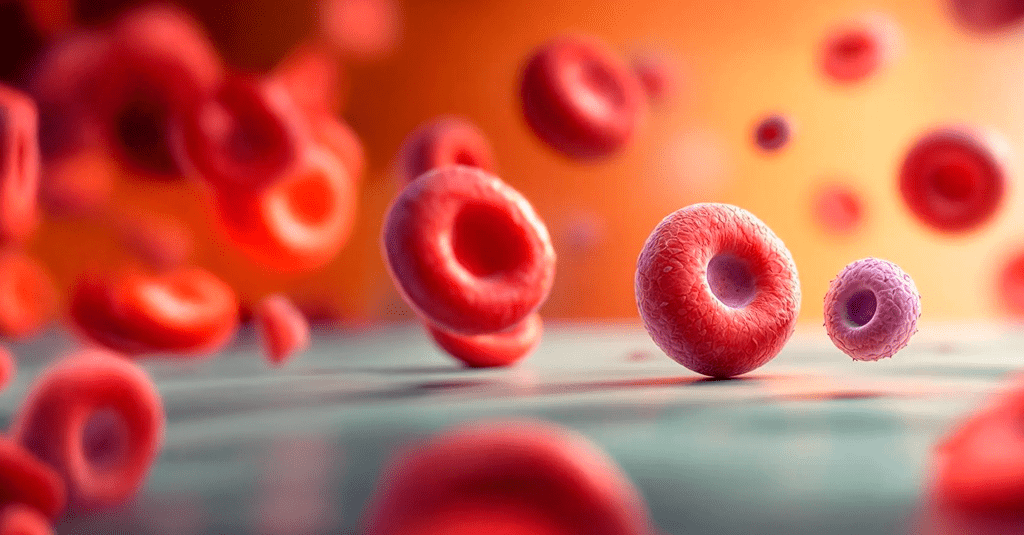The Online Meeting was presented by Julia Baruque, Bachelor in Microbiology and Immunology (UFRJ), Master in Biochemical Process Engineering (UFRJ), and Technical Analyst at Controllab.
The session covered the importance of reference strains, the regulatory requirements for their use, criteria for selection and preservation, as well as the main errors in laboratory routine and good biosafety practices.
With updated content, the training helped participants enhance their internal processes, promoting more reliable results and greater safety in conducting microbiological procedures.
Questions & Answers
The following questions were not addressed during the Online Meeting.
Anaerobic microorganisms, such as C. perfringens — in addition to incubation in an anaerobic jar, what additional precautions should be taken to ensure proper culture preservation? Do culture plates and tubes containing cryoprotective medium require different storage conditions?
For anaerobic microorganisms like C. perfringens, beyond using an anaerobic jar, it is essential to handle samples quickly to avoid oxygen exposure, incubate immediately after plating, and ensure the entire process occurs in a minimally oxidizing environment. Plates should be stored in the refrigerator only for short periods and always sealed, while cryovials with cryoprotective medium must be kept exclusively at –80°C, as they are intended for long-term preservation and must not be stored under the same conditions as plates.
I would like to confirm: if I observe a difference in results when using NCTC and ATCC strains, what would explain this discrepancy?
Significant differences are not expected, as both NCTC and ATCC are highly standardized and internationally recognized reference collections. When discrepancies occur, they usually stem from internal laboratory factors—such as culture conditions, inoculum preparation, medium integrity, incubation parameters, equipment performance, or handling issues. Therefore, upon detecting any difference, the laboratory should immediately activate its internal verification processes, review procedures, check records, and conduct additional controls to ensure compliance.
ould the validity of the frozen strain correspond to the schedule in the Opustil book, and would the certificate’s validity apply only to the period allowed for reconstituting the lyophilized strain?
The chart in the book provides general guidance on optimal storage conditions and estimated stability periods for each microorganism type. However, these are broad technical recommendations. The validity that must be strictly followed is the one provided by the producer, recorded in the certificate or official documentation. This certified validity reflects specific stability tests, logistics, batch characteristics, and actual production conditions. Therefore, despite the book offering general references, the supplier’s official validity must be followed to ensure compliance and traceability.
How can we access information regarding changes in the validity of reference strains? We noticed that some batches undergo retesting and receive new validity dates, but these updates do not always reach users. Is there a specific channel for these updates?
Validity updates and retest results are published directly on the suppliers’ official websites, usually on each strain’s individual page. Some producers offer newsletters, but there is no standardized channel that automatically distributes these updates. Therefore, it is the laboratory’s responsibility to periodically check the collection’s website or contact the supplier directly.
Any recommendations for maintaining S. pneumoniae and H. influenzae? We store them at –80°C, thaw monthly, and subculture weekly, but they often lose viability in the refrigerator or become contaminated at room temperature.
Streptococcus pneumoniae and Haemophilus influenzae are highly sensitive organisms and require –80°C stocks with cryoprotectant, very fresh subcultures, incubation in enriched atmospheres (e.g., CO₂ for S. pneumoniae), and minimal time at either refrigerator or room temperature. These strains lose viability quickly outside optimal conditions, which explains the difficulty in maintaining them under milder environments.
The example given for working cultures referred to Controllab’s lyophilized strains. Would this process also work for strains from other manufacturers?
Yes. This workflow is effective regardless of the supplier. The only crucial point is that the laboratory must follow the supplier’s instructions precisely when reconstituting the strain. Once the microorganism is reconstituted on a plate, the laboratory may proceed with the workflow that was presented.
What is the contingency plan for microorganism disposal if the autoclave fails? Our municipality has a waste treatment service. Can we use red biohazard bags?
If the autoclave becomes unavailable, microorganism disposal should follow a contingency plan that includes placing waste in red biohazard bags, storing it temporarily in a secure area, and sending it to the municipality’s licensed waste treatment service. All steps must be documented until routine operations resume.
Is there any study on the loss of the mecA gene in S. aureus NCTC 12493 or any other mechanism that could lead the strain to show larger ATB inhibition zones than expected?
There are reports of partial or complete loss of the SCCmec element or decreased mecA expression in S. aureus NCTC 12493, especially after repeated subculturing or stress conditions. Such loss or phenotypic silencing can lead to larger-than-expected inhibition zones, representing a “functional loss” of resistance.
What could be the reason for excess moisture on plates stored in the refrigerator?
Excess moisture usually results from placing plates in the refrigerator while still warm, which leads to condensation, or from temperature fluctuations, inadequate sealing, or media with high water content. High-humidity refrigerators also contribute to this problem.
Can I use a strain from a culture collection that is not accredited to ISO 17034 in my process?
You may use a strain from a non–ISO 17034-accredited culture collection as long as the test does not formally require a Certified Reference Material (CRM). However, for accredited assays, ISO 17025 mandates the use of CRMs from an accredited producer.
Any specific recommendations for handling CRMs when performing growth promotion tests and inoculum standardization?
CRMs for growth promotion tests and inoculum standardization must always be handled using freshly hydrated or freshly thawed cultures, avoiding aged cultures or repeated subculturing. Maintaining traceability, recording the lot and characterizations, and ensuring that the inoculum meets the method’s specifications are essential.
Can I purchase qualitative strains to perform quantitative tests?
Yes. For quantitative applications, the laboratory may enumerate the microorganism (e.g., plate count), adjust the concentration to the desired range, and then use it in the quantitative process.
What actions should be taken if the extra round does not achieve the expected results?
If the extra round fails to meet expected results, the laboratory should review inoculation conditions, media quality, equipment, and procedures, and initiate an internal investigation to address the inconsistency.
After freezing the pearls in the cryovial, how should the individual pearls be used?
After freezing, each pearl should be removed individually with a sterile tool, without allowing the tube to thaw. Only one pearl should be used at a time, and the cryovial must be returned to –80°C immediately.
TSB/glycerol is labeled sterile. Why is autoclaving still recommended?
Although commercially supplied TSB/glycerol is sterile, autoclaving after aliquoting is recommended not due to the product’s quality but to the laboratory’s internal process-control requirements. Autoclaving ensures sterility under the lab’s specific handling conditions—after opening, manipulation, and dispensing into cryovials. This eliminates any contamination introduced during handling and maintains the standardization required by quality and biosafety norms such as GMP, ISO 17025, and GLP.
Is PCA (Plate Count Agar) ideal for cultivating strains, or is there a more suitable medium?
PCA is useful for total aerobic bacterial counts but is not ideal for all reference strains, particularly fastidious organisms or those used for susceptibility testing. In general, TSA, BHI, chocolate agar, or Mueller–Hinton provide better conditions for most strains. However, the medium recommended in each supplier’s certificate must always be followed.
If the laboratory is capable of storing lyophilized strains long-term, why must we still follow the validity stated on the certificate?
Even if the laboratory can store the lyophilized strain for extended periods, the certificate’s validity must be followed because the manufacturer only guarantees stability and analytical attributes up to that date. After expiration, neither genotypic nor phenotypic profiles are assured, and only the manufacturer can revalidate the product.
Can I conduct a study demonstrating that the strain remains stable beyond the manufacturer’s stated validity?
You may conduct an internal study showing that the strain remains stable beyond the manufacturer’s date; however, these results do not replace the certificate’s validity and cannot justify using the strain in accredited assays. They serve only as internal technical evaluation. Using expired products is prohibited in Brazil and considered a serious violation of the Consumer Protection Code (CDC), potentially constituting a public health offense.
We have difficulty maintaining Campylobacter. Any tips for storage and daily subculturing?
Campylobacter is extremely sensitive. To maintain viability, daily subculturing under microaerophilic conditions is required, using specific and always fresh media, maintaining frozen stocks at –80°C with cryoprotectant, and never leaving cultures at room temperature or in the refrigerator. Even small environmental variations may compromise viability.







